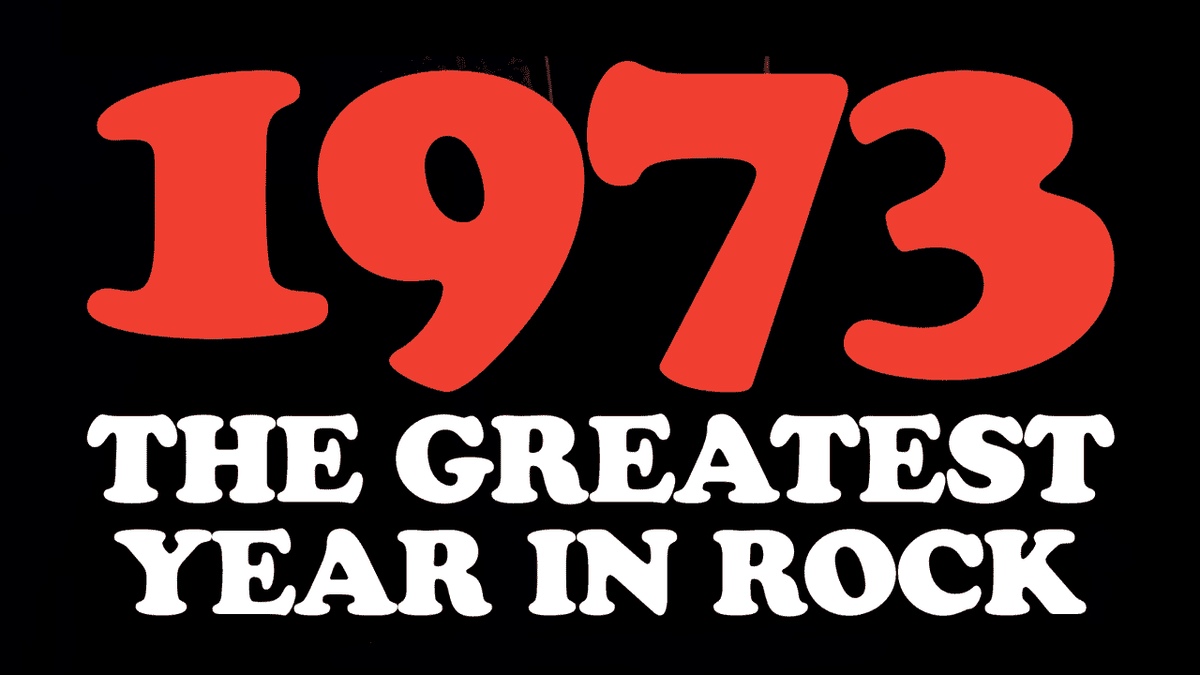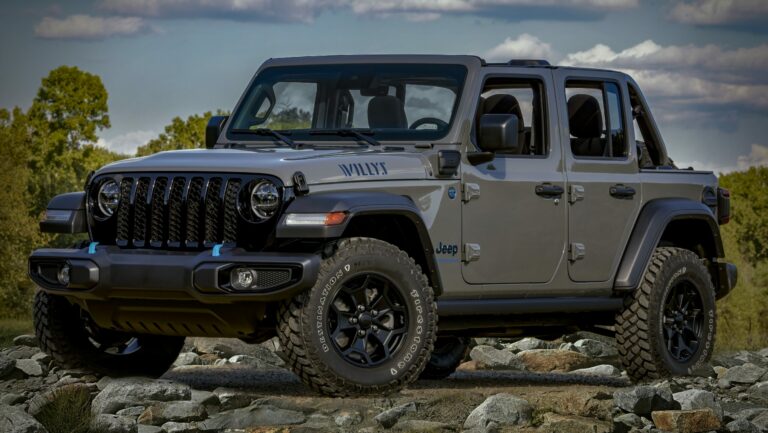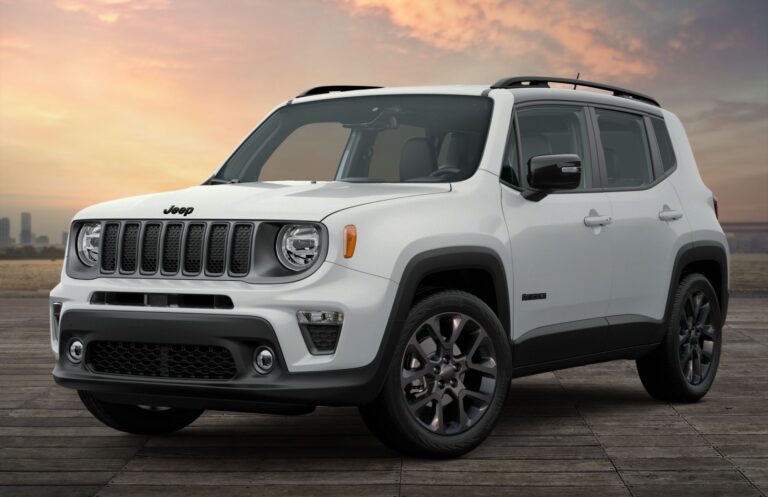1973 Jeep Commando For Sale: A Comprehensive Buyer’s Guide
1973 Jeep Commando For Sale: A Comprehensive Buyer’s Guide jeeps.truckstrend.com
Introduction: Unearthing a Classic – The 1973 Jeep Commando
In the annals of automotive history, few vehicles evoke the same sense of rugged independence and adventurous spirit as a vintage Jeep. Among these iconic machines, the 1973 Jeep Commando stands out as a unique and increasingly sought-after classic. Representing the final year of the "Commando" nameplate, this particular model holds a special place, marking the culmination of a distinct design era under American Motors Corporation (AMC) ownership before the name was retired in favor of the Cherokee.
1973 Jeep Commando For Sale: A Comprehensive Buyer’s Guide
More than just a vehicle, the 1973 Commando is a tangible piece of Americana, a testament to simpler times when utility and off-road prowess were paramount. Its distinctive styling, robust mechanicals, and the sheer nostalgia it embodies make it an attractive prospect for collectors, off-road enthusiasts, and anyone yearning for a taste of vintage four-wheeling. Whether you’re looking for a weekend trail rig, a unique showpiece, or a rolling investment, finding a 1973 Jeep Commando for sale presents an exciting opportunity. This comprehensive guide aims to equip potential buyers with the knowledge and insights needed to navigate the market, understand the nuances of ownership, and ultimately, make an informed purchase.
I. A Brief History of the 1973 Jeep Commando: The End of an Era
To truly appreciate the 1973 Commando, one must understand its lineage. The Commando story began in 1967 under Kaiser-Jeep, introducing the C101 series with its distinctive "bullnose" front end, intended to bridge the gap between the utilitarian CJ and the more family-oriented Wagoneer. It was available in several body styles: roadster, pickup, wagon, and convertible.
However, a significant transformation occurred when American Motors Corporation acquired Kaiser-Jeep in 1970. AMC, aiming to modernize and streamline the Jeep lineup, completely redesigned the Commando’s front end for the 1972 model year. This new design, designated the C104, featured a full-width grille and front clip that aligned more closely with AMC’s passenger car styling of the era. This "AMC-era" Commando, often referred to as the "Super Commando," carried through to the 1973 model year.
The 1973 Commando retained its robust body-on-frame construction and solid axles, making it a formidable off-road machine. Engine options included AMC’s durable inline-six engines (the 232 cu in and the more powerful 258 cu in) and the highly desirable 304 cu in V8. Transmission choices typically included a 3-speed manual (T-15) or a 4-speed manual (T-18) and a 3-speed automatic (TH400), paired with the reliable Dana 20 transfer case.
The 1973 model marked the final curtain call for the Commando name. After this year, Jeep introduced the full-size Cherokee (based on the Wagoneer platform), and the compact Commando was discontinued. This makes the 1973 model historically significant, representing the last iteration of a beloved and distinctive Jeep line. Its relative rarity, especially in good condition, contributes to its growing appeal in the classic car market.
II. Why Buy a 1973 Jeep Commando Today?
Investing in a vintage vehicle is a decision often driven by passion, and the 1973 Jeep Commando offers a compelling set of reasons for enthusiasts:

- Classic Appeal & Unique Styling: The 1972-73 AMC-styled Commando, while controversial upon its release, has aged remarkably well. Its wide, aggressive stance and distinctive front end set it apart from other Jeeps of the era and modern SUVs. It’s a head-turner that sparks conversations wherever it goes.
- Off-Road Prowess: Beneath the classic sheet metal lies a true off-road workhorse. With solid axles (Dana 30 front, Dana 44 rear for many V8 models), a robust transfer case, and a compact wheelbase, the Commando is highly capable on trails. It embodies the core tenets of Jeep’s go-anywhere philosophy.
- Collector’s Item & Investment Potential: As the last of its kind, the 1973 Commando is becoming increasingly collectible. Well-maintained, original, or professionally restored examples are appreciating in value. It’s not just a hobby; it can be a sound investment.
- Customization Platform: The Commando benefits from a strong aftermarket. Its straightforward mechanical design makes it relatively easy to modify with lift kits, engine upgrades, larger tires, and other off-road accessories. Whether you want a stock restoration or a custom rock crawler, the Commando provides an excellent canvas.
- Engaging Driving Experience: Forget modern creature comforts. Driving a 1973 Commando is a visceral experience. You feel connected to the road (or trail), hear the engine roar, and appreciate the mechanical simplicity. It’s a raw, unfiltered journey that reminds you what driving used to be about.
- Strong Community Support: The vintage Jeep community is vast and welcoming. Owners benefit from a wealth of knowledge, shared experiences, and readily available advice through online forums, clubs, and social media groups. This network is invaluable for troubleshooting, finding parts, and connecting with fellow enthusiasts.
III. What to Look For: A Buyer’s Guide for the 1973 Commando
Purchasing a vintage vehicle, especially a 50-year-old off-roader, requires a thorough inspection. Here’s a detailed checklist for evaluating a 1973 Jeep Commando for sale:
-
Body and Frame (Rust is King):
- Frame: Inspect the entire frame for rust, cracks, and previous repairs. Pay close attention to spring perches, shackle mounts, and areas where mud or debris might collect.
- Body Panels: Common rust spots include floorboards (especially under the pedals and passenger footwell), rocker panels, wheel wells, rear quarter panels, and the tailgate. Check for bubbling paint, which indicates underlying rust. Look for signs of bondo or poor bodywork.
- Hardtop/Soft Top: Inspect the hardtop for cracks, leaks, and integrity. If it has a soft top, check its condition, windows, and frame.
- Doors & Hood: Check for alignment, rust, and proper closing.
-
Engine and Drivetrain:
- Engine: Identify the engine (232 I6, 258 I6, or 304 V8). Listen for unusual noises (knocking, ticking), smoke from the exhaust (blue for oil, white for coolant, black for rich fuel), and excessive leaks. Check fluid levels and condition.
- Transmission:
- Manual: Test all gears, including reverse. Listen for grinding. Check clutch feel and engagement.
- Automatic: Check fluid color and smell (should be red, not burnt). Test engagement in all gears.
- Transfer Case (Dana 20): Engage 4WD (high and low range). Listen for grinding or clunking.
- Axles (Dana 30 front, Dana 44 rear): Check for leaks around the differential covers and axle seals. Listen for humming or grinding noises, which could indicate worn gears or bearings.
-
Suspension and Steering:
- Suspension: Inspect leaf springs for cracks or sagging. Check shocks for leaks. Look for worn bushings in shackles and control arms (if applicable for a modified setup).
- Steering: Check for excessive play in the steering wheel. Inspect tie rods, drag link, and steering box for looseness or leaks (if power steering).
-
Brakes:
- System: Check brake fluid level and condition. Inspect lines for rust or damage. Test the pedal feel – it should be firm, not spongy.
- Components: Look at the condition of brake drums/rotors, pads/shoes, and wheel cylinders/calipers.
-
Electrical System:
- Test all lights (headlights, tail lights, turn signals, brake lights), wipers, horn, and gauges.
- Inspect wiring for brittle insulation, splices, or obvious fire hazards.
- Check battery condition and charging system (alternator).
-
Interior:
- Check seats for rips, tears, and frame integrity.
- Inspect the dashboard for cracks and gauge functionality.
- Test the heater/defroster.
- Check the condition of the floor mats and any carpeting.
-
Paperwork and Documentation:
- Verify a clear title.
- Ask for any maintenance records, restoration receipts, or ownership history. This can provide valuable insight into the vehicle’s past.
-
Modifications:
- Many Commandos have been modified. Evaluate the quality of any aftermarket parts, lift kits, engine swaps, or other custom work. Poorly executed modifications can lead to safety issues and costly repairs.
Practical Advice and Actionable Insights:
- Set a Realistic Budget: Beyond the purchase price, factor in potential costs for immediate repairs, maintenance, insurance, and possibly a restoration. Vintage vehicles always have hidden costs.
- Get a Pre-Purchase Inspection (PPI): If possible, hire a reputable mechanic specializing in vintage Jeeps or 4x4s to perform a thorough inspection. This objective assessment can save you from costly surprises.
- Don’t Rush: There will always be another Commando for sale. Be patient, do your research, and wait for the right vehicle that fits your budget and expectations.
- Understand Your Skill Level: Are you comfortable with DIY repairs, or will you rely on a mechanic? This will influence the type of condition you should target.
- Join the Community: Before buying, join online forums (e.g., EarlyCJ5.com, IFSJA.org for AMC Jeeps) and local clubs. You’ll gain invaluable knowledge, tips, and potentially even leads on vehicles for sale.
IV. Ownership Considerations: Life with a Vintage Jeep
Owning a 1973 Jeep Commando is a rewarding experience, but it comes with its own set of considerations:
- Maintenance & Parts Availability: While common mechanical parts (engine, transmission, axles) are generally available due to shared components with other AMC/Jeep models, specific body panels, interior trim, and unique Commando parts can be challenging and expensive to source. Regular maintenance is crucial to keep it running reliably.
- Fuel Economy: Don’t expect modern fuel efficiency. The 304 V8, in particular, can be quite thirsty, especially with larger tires and a heavy foot.
- Comfort & Daily Driving: A Commando is not a modern SUV. Expect a firm ride, road noise, limited creature comforts (no power windows, basic HVAC), and potentially manual steering and brakes (unless upgraded). It’s best suited for recreational use rather than a daily commute, unless you truly embrace the vintage experience.
- Insurance: Look into classic car insurance policies. They often offer better rates and agreed-value coverage compared to standard auto insurance.
- Storage: Protect your investment from the elements. A garage or covered parking is ideal to prevent rust and preserve the vehicle’s condition.
- Safety: Vintage vehicles lack modern safety features like airbags, ABS, and crumple zones. Drive defensively and be aware of their limitations.
V. Finding Your 1973 Jeep Commando: Where to Look
The hunt for a specific classic can be part of the adventure. Here are common places to find a 1973 Jeep Commando for sale:
- Online Marketplaces:
- Bring a Trailer (BaT): Known for higher-quality, often restored or well-preserved classics. Prices tend to be at the higher end of the spectrum.
- eBay Motors: A wide range of conditions, from projects to finished vehicles. Be cautious and thorough with inspections.
- ClassicCars.com, Hemmings, Autotrader Classics: Dedicated classic car listing sites.
- Facebook Marketplace/Groups: Many enthusiast-specific groups for vintage Jeeps and 4x4s where owners list vehicles for sale directly. This can be a great source for community-vetted vehicles.
- Specialized Forums & Enthusiast Clubs: Websites like EarlyCJ5.com or IFSJA.org often have classified sections where members sell their vehicles. This provides access to knowledgeable sellers and vehicles that have been maintained by enthusiasts.
- Local Classifieds & Word-of-Mouth: Sometimes the best deals are found offline. Check local classifieds, attend local car shows, and let friends and family know you’re looking.
- Classic Car Dealerships & Auctions: These venues often have restored or well-maintained examples, but prices will reflect the overhead and markup. Auctions can be exciting but require quick decision-making and a clear understanding of the vehicle’s condition beforehand.
VI. Price Guide: 1973 Jeep Commando For Sale (Hypothetical Example & Range)
As pricing for classic vehicles varies wildly based on condition, originality, modifications, and market demand, it’s impossible to provide a definitive price for the 1973 Jeep Commando for sale. However, here is a hypothetical example of a well-represented vehicle and a general price range based on condition.
Hypothetical Example: 1973 Jeep Commando "Trail-Ready Classic"
| Feature | Description |
|---|---|
| Year | 1973 |
| Make | Jeep |
| Model | Commando (C104) |
| Engine | AMC 304 C.I. V8 (Original, rebuilt 5 years ago) |
| Transmission | TH400 3-speed Automatic |
| Transfer Case | Dana 20 |
| Axles | Dana 30 Front / Dana 44 Rear |
| Mileage (Odometer) | 98,500 Miles (TMU – True Mileage Unknown, typical for age) |
| Body Style | Wagon (Hardtop) |
| Exterior Color | Forest Green (Repainted 7 years ago, driver quality) |
| Interior Color | Black Vinyl (Seats reupholstered, new carpet) |
| Condition | Good Original Driver. Mechanically sound, starts and runs well. Minimal surface rust on underside. |
| Modifications | 2.5-inch suspension lift, 31-inch BFG All-Terrain tires (80% tread), new exhaust, modern stereo. |
| Features | Power Steering, Power Brakes (front disc conversion), Removable Hardtop, Roll Bar. |
| Known Issues | Minor oil weep from transfer case, small crack in dash pad, fuel gauge intermittent. |
| Location | Hypothetical: Denver, Colorado |
| Asking Price | $22,500 USD |
General Price Range for 1973 Jeep Commando (Based on Condition):
| Condition Category | Description | Estimated Price Range (USD) |
|---|---|---|
| Project / Parts Vehicle | Significant rust, major mechanical issues, incomplete. Requires full restoration. | $3,000 – $8,000 |
| Driver Quality (Needs Work) | Runs and drives, but has obvious mechanical or cosmetic flaws. Usable as is, but needs attention. | $8,000 – $15,000 |
| Good Original / Restored Driver | Well-maintained, largely original, or an older quality restoration. Few issues, reliable for weekend use. | $15,000 – $25,000 |
| Excellent / Show Quality | Near-perfect, frame-off restoration or exceptionally well-preserved original. Turn-key and ready for shows. | $25,000 – $40,000+ |
Note: Prices are estimates and can fluctuate based on market demand, location, specific features (e.g., V8 vs. I6, power options), and documentation.
VII. Frequently Asked Questions (FAQ) about the 1973 Jeep Commando
Q: Is the 1973 Commando a good daily driver?
A: Generally, no. While some owners use them regularly, their age, lack of modern safety features, basic comfort, and lower fuel economy make them less suitable for daily commuting compared to modern vehicles. They shine as weekend cruisers or off-roaders.
Q: Are parts hard to find for a 1973 Commando?
A: Mechanical parts (engine, transmission, drivetrain components) are relatively available due to shared lineage with other AMC/Jeep models. However, specific body panels, unique trim pieces, and interior components can be challenging and expensive to source, often requiring fabrication or diligent searching in enthusiast communities.
Q: What’s the main difference between a 1971 and a 1973 Commando?
A: The most significant difference is the front end styling. The 1971 Commando (C101) was the last year of the "bullnose" Kaiser-Jeep design. The 1972-1973 models (C104) feature the completely redesigned, full-width AMC-styled grille and front clip.
Q: What engines were available in the 1973 Commando?
A: The 1973 Commando was available with AMC’s inline-six engines (the 232 cubic inch and the 258 cubic inch) and the popular AMC 304 cubic inch V8.
Q: How much should I expect to pay for a good 1973 Commando?
A: As detailed in the price table above, a good original or nicely restored driver-quality 1973 Commando typically ranges from $15,000 to $25,000, depending on condition and specific features. Project vehicles can be found for much less, while show-quality examples can exceed $40,000.
Q: Can I lift a 1973 Commando? Are there aftermarket parts?
A: Yes, absolutely. The 1973 Commando is a popular platform for modification. Many aftermarket companies offer suspension lift kits, larger tires, engine upgrades, and other accessories to enhance its off-road capability and appearance.
Q: How reliable is a 50-year-old Jeep Commando?
A: Reliability largely depends on how well the vehicle has been maintained and restored. Like any vintage vehicle, it will require more frequent attention and preventative maintenance than a modern car. However, with proper care, these Jeeps are known for their rugged durability.
Concluding Summary: Embarking on Your Commando Adventure
The 1973 Jeep Commando represents a unique chapter in Jeep’s storied history – the final iteration of a distinct and beloved nameplate. Its blend of classic styling, undeniable off-road capability, and growing collector appeal makes it a highly desirable vehicle for enthusiasts and collectors alike. Owning a Commando is more than just possessing a vehicle; it’s about embracing a lifestyle, connecting with a rich automotive heritage, and enjoying the raw, unfiltered experience of vintage 4×4 motoring.
While the journey to finding the right 1973 Commando for sale requires diligence, a keen eye for detail, and a clear understanding of the commitment involved, the rewards are immeasurable. From the satisfaction of turning wrenches to the thrill of conquering trails, or simply cruising with the top off, a 1973 Jeep Commando offers an unparalleled connection to the open road and the great outdoors. It’s an investment in adventure, a piece of living history, and a vehicle that will undoubtedly spark joy for years to come.







